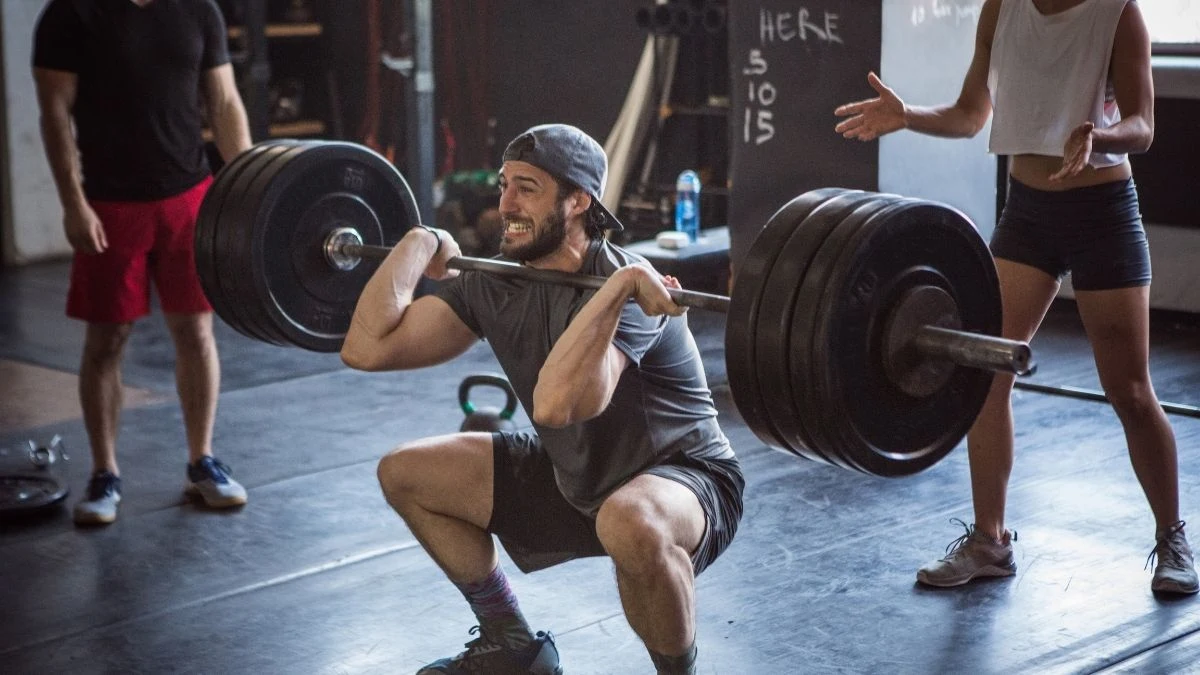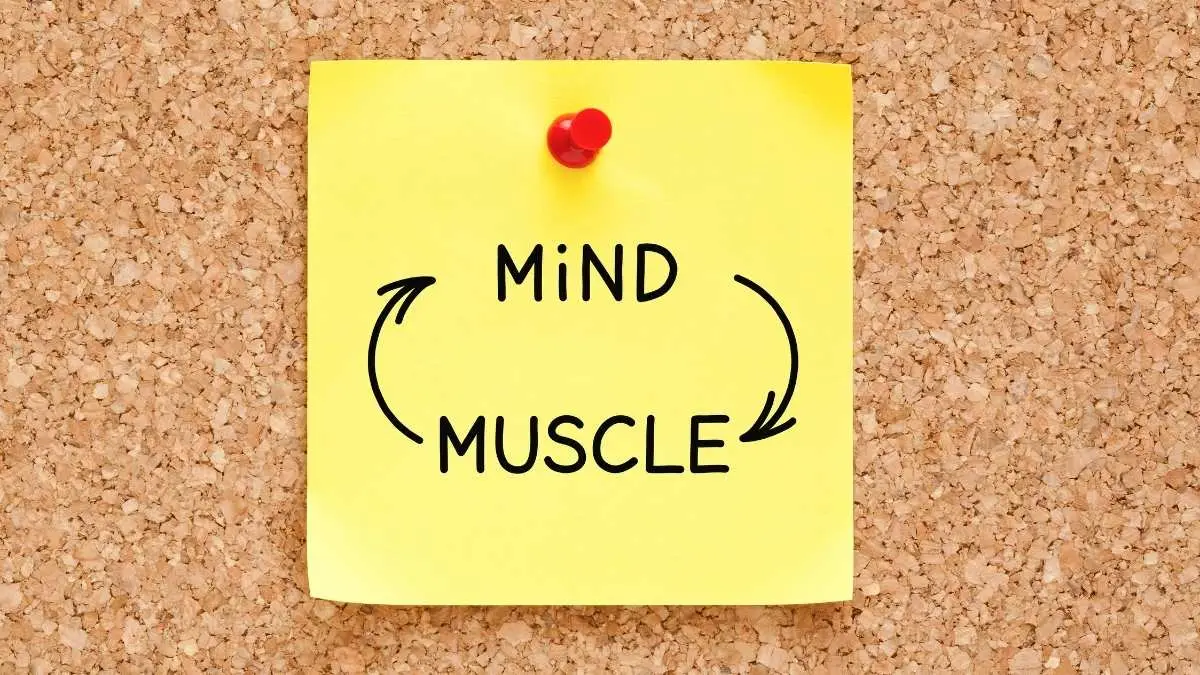Stop Wasting Your Workouts: The Surprising Truth About Where Muscle Is Really Built

You spend hours pumping iron, counting reps, and chasing the perfect workout routine. Yet your muscles refuse to grow despite your dedication and sweat. The harsh truth is that most people waste their gym time because they fundamentally misunderstand how muscle building actually works.
Research reveals a shocking reality: your gains depend more on what happens outside the gym than inside it. Nutrition, sleep, stress management, and recovery drive muscle growth while your workout simply provides the initial stimulus.
Fitness influencers sell you complex programs and expensive supplements, but they ignore the basic principles that actually matter. Professional bodybuilders and elite athletes know these secrets, spending equal time planning their meals, sleep schedules, and recovery as they do lifting weights.

This article exposes 12 game changing truths that will transform your results without changing your gym routine. Stop wasting your workouts and start building the physique you deserve.
1. The Kitchen vs. Gym Reality Check
Most people spend two hours at the gym but thirty seconds planning their meals. Research shows that nutrition accounts for 70% of muscle building results, while exercise contributes only 30%.

Your body needs specific nutrients at precise times to repair and grow muscle tissue. Without adequate protein, carbohydrates, and healthy fats, even the most intense workout becomes meaningless.
Trainers often say “abs are made in the kitchen,” but this principle applies to every muscle group. What you eat after your workout determines whether you build muscle or just feel sore the next day. Professional bodybuilders understand this balance, spending equal time meal prepping and training.
Key Tips:
- Eat 1.6-2.2 grams of protein per kilogram of body weight daily
- Consume carbs within 30 minutes post workout to replenish glycogen stores
- Track your food intake for at least one week to identify nutritional gaps
2. The Protein Timing Myth Debunked
Social media fitness gurus create panic about the “anabolic window,” claiming you must drink protein within 30 minutes or lose all gains. Scientific studies reveal this window stays open for 2-4 hours after training, not 30 minutes.

Your muscles remain primed for protein synthesis much longer than influencers suggest. Total daily protein intake matters more than precise timing for most recreational athletes.
Spreading protein evenly across 4-5 meals throughout the day optimizes muscle protein synthesis better than cramming it all post workout. Elite athletes may benefit from strategic timing, but beginners should focus on hitting daily protein targets first.
Key Tips:
- Aim for 20-40 grams of protein per meal rather than massive post workout shakes
- Include protein sources in every meal to maintain steady amino acid levels
- Don’t stress if you miss the immediate post workout window occasionally
3. Sleep: The Forgotten Muscle Builder
Many gym enthusiasts prioritize supplements over sleep, missing the most powerful muscle building tool available. During deep sleep phases, your body releases 95% of its daily growth hormone, directly triggering muscle repair and growth.

Sleep deprivation reduces protein synthesis by up to 18% and increases muscle breakdown hormones like cortisol. Athletes getting less than 7 hours nightly show significantly slower recovery times and weaker performance.
Quality sleep acts like a natural steroid, optimizing every aspect of muscle development without side effects. Professional athletes often sleep 9-10 hours daily, treating rest as seriously as training sessions.
Key Tips:
- Maintain consistent sleep and wake times, even on weekends
- Create a dark, cool environment (65-68°F) for optimal growth hormone release
- Avoid screens 1 hour before bed to improve deep sleep phases
4. Progressive Overload vs. Ego Lifting
Gym culture celebrates lifting heavy weights, but smart muscle building requires strategic progression. Progressive overload means gradually increasing weight by 2.5-5 pounds when you can complete all sets with good form.

Ego lifting involves loading maximum weight to impress others, often sacrificing technique and consistency. Your muscles respond to consistent challenge over time, not sporadic maximum efforts that lead to injury.
Sustainable progress comes from adding small amounts regularly rather than dramatic jumps that stall development. Successful bodybuilders track every workout, focusing on incremental improvements rather than personal records.
Key Tips:
- Increase weight only when you can complete all planned reps with proper form
- Add 2.5 pounds for upper body exercises and 5 pounds for lower body movements
- Keep detailed workout logs to track progress and identify patterns
5. The Recovery Paradox
Common fitness advice suggests “no pain, no gain,” leading people to train daily without rest. Muscle growth occurs during recovery periods, not during the actual workout sessions.

Training creates microscopic tears in muscle fibers, but repair happens when you rest. Overtraining syndrome develops when you don’t allow adequate recovery time between sessions.
Taking planned rest days actually accelerates muscle growth by giving your body time to rebuild stronger tissue. Professional athletes incorporate recovery as deliberately as they plan training, understanding that rest drives adaptation.
Key Tips:
- Schedule at least 48 hours between training the same muscle groups
- Include one complete rest day weekly for optimal recovery
- Listen to your body and take extra rest when feeling unusually fatigued
6. Compound Movements: Your Efficiency Multiplier
Many beginners gravitate toward isolation exercises like bicep curls and tricep extensions, missing the bigger picture. Compound movements like squats, deadlifts, and pull ups activate multiple muscle groups simultaneously, creating more overall muscle stimulus.

These exercises also trigger greater hormone responses and burn more calories than isolation work. Beginners can build impressive physiques using only compound movements for the first 6-12 months.
One squat session works more muscles than an entire day of isolation exercises. Olympic weightlifters and powerlifters build remarkable physiques primarily through compound movements, proving their effectiveness.
Key Tips:
- Master bodyweight versions before adding external weight to compound movements
- Focus on 5-7 compound exercises rather than 15-20 isolation movements
- Learn proper form with light weights before progressing to heavier loads
7. The Hydration-Strength Connection
Water makes up 76% of muscle tissue, yet most gym goers treat hydration as an afterthought. Even 2% dehydration reduces muscle performance by 15% and decreases strength output significantly.

Your muscles need adequate fluid to transport nutrients, remove waste products, and maintain optimal contraction force. Dehydration also impairs temperature regulation during intense training sessions, leading to early fatigue.
Proper hydration acts like a performance enhancer that costs nothing and has zero side effects. Athletes who maintain optimal fluid levels consistently outlift and outperform their dehydrated counterparts. Sports scientists consider hydration status one of the most controllable factors affecting workout quality.
Key Tips:
- Drink 500ml of water 2 hours before training and 200ml every 15-20 minutes during exercise
- Monitor urine color as a hydration indicator (pale yellow indicates good hydration)
- Weigh yourself before and after workouts, drinking 150% of weight lost through sweat
8. Stress: The Silent Gains Killer
Modern life bombards us with deadlines, traffic, and constant notifications that secretly sabotage muscle building efforts. Chronic stress elevates cortisol levels, a hormone that literally breaks down muscle tissue faster than you can build it.

High cortisol also reduces testosterone production and impairs protein synthesis throughout the body. Many dedicated gym goers wonder why they plateau despite consistent training, not realizing their stressed lifestyle undermines every workout.
Managing stress becomes as crucial as managing nutrition for serious muscle building results. Meditation, deep breathing, and stress reduction techniques can dramatically improve training outcomes. Professional athletes employ stress management coaches alongside strength trainers for this exact reason.
Key Tips:
- Practice 10 minutes of deep breathing or meditation daily to lower cortisol naturally
- Identify and eliminate unnecessary stressors from your daily routine where possible
- Schedule relaxing activities like reading or nature walks between intense training days
9. The Volume Sweet Spot
Fitness enthusiasts often believe more training automatically equals better results, leading to excessive workout volumes. Research shows 10-20 sets per muscle group weekly optimizes growth, while exceeding this range often reduces gains.

Your muscles need adequate stimulus to grow but also sufficient recovery time between sessions. Volume recommendations vary based on training experience, with beginners requiring fewer sets than advanced lifters.
Finding your personal volume sweet spot maximizes results while preventing overtraining and burnout. Bodybuilders carefully track weekly set counts for each muscle group, treating volume like a precise prescription. Too little stimulus leaves gains on the table, while too much creates a recovery debt your body cannot repay.
Key Tips:
- Start with 10-12 sets weekly per muscle group and gradually increase based on recovery ability
- Count all working sets across different exercises targeting the same muscle group
- Reduce volume immediately if you experience declining performance or persistent fatigue
10. Consistency Beats Intensity
Social media showcases extreme workouts and dramatic transformations, creating unrealistic expectations about training frequency. Three moderate workouts weekly for an entire year produces far better results than six intense sessions monthly.

Your body adapts to regular, sustainable stimulus rather than sporadic intense efforts followed by long breaks. Consistency builds momentum through the compound effect, where small daily actions create massive long term changes.
Showing up regularly with moderate effort outperforms occasional heroic training sessions every time. Successful athletes prioritize attendance over intensity, understanding that habits drive results more than motivation. Even Olympic champions built their physiques through years of consistent daily practice rather than periodic intense training camps.
Key Tips:
- Schedule 3-4 weekly training sessions at the same times to build automatic habits
- Lower workout intensity when life gets busy rather than skipping sessions entirely
- Track workout frequency over monthly periods to identify consistency patterns
11. Mind-Muscle Connection Reality
Many lifters move weights mechanically without thinking about the muscles they want to develop. Consciously focusing on the target muscle during exercises can increase activation by up to 60% without changing weight or repetitions.

This mental focus improves neural pathways between your brain and muscles, enhancing recruitment patterns. Bodybuilders use visualization techniques, imagining their muscles contracting and growing during each repetition.
Quality concentration during sets often matters more than the actual load lifted for muscle development. EMG studies show dramatically higher muscle activation when lifters focus intently on the working muscle versus mindless repetition. Professional physique competitors spend years mastering this skill, treating mental focus as seriously as physical technique.
Key Tips:
- Slow down repetitions and visualize the target muscle contracting throughout each rep
- Use lighter weights initially while learning to feel and focus on specific muscles
- Practice flexing and contracting muscles without weights to improve neural connections
12. The Plateau Prevention Formula
Most people follow the same routine for months, wondering why their progress stalls after initial gains. Your muscles adapt to familiar stimulus within 6-8 weeks, requiring program changes to continue growing. Adaptation represents survival efficiency, where your body becomes economical at performing repeated movements.

Smart periodization involves systematically changing exercises, rep ranges, and training variables every 6-8 weeks. Keeping your muscles challenged through planned variation prevents stagnation and reignites growth.
Elite athletes work with coaches to design complex periodization schemes that peak performance at specific times. Even small changes like grip width, tempo, or exercise order can provide enough novelty to stimulate new adaptations and break through plateaus.
Key Tips:
- Change 1-2 variables every 6-8 weeks such as exercises, rep ranges, or rest periods
- Keep detailed training logs to identify when progress begins slowing down
- Introduce new movement patterns regularly while maintaining focus on compound exercises
Final Thoughts:
Building muscle extends far beyond the gym walls into every aspect of your daily life. Your kitchen, bedroom, stress levels, and water bottle contribute more to your physique than the latest workout program or supplement. Most people waste months chasing complex routines while ignoring fundamental principles that actually drive muscle growth.

Success comes from mastering the basics: eating enough protein, sleeping adequately, managing stress, staying consistent, and allowing proper recovery. The strongest people understand that muscle building happens 24/7, not just during their one hour training sessions.
Small daily habits compound into remarkable transformations over time, while sporadic intense efforts produce minimal lasting results. Stop searching for shortcuts and start building sustainable systems that support long term muscle development. Your future self will thank you for focusing on what truly matters rather than what simply feels impressive in the moment.






